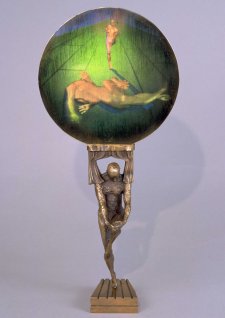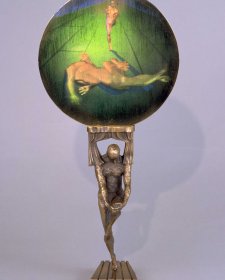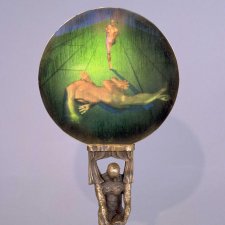Paula Dawson AM (b. 1954), artist and university lecturer, is an internationally recognised pioneer in the field of holography. Born in Brisbane, Dawson grew up in Melbourne and studied art at the Royal Melbourne Institute of Technology and the Victoria College of the Arts. Dawson's first exhibition of holograms was in a student show in 1974. After completing a term as artist-in-residence at the Laboratoire de Physique Generale et Optique in France, experimenting there with different types of holographic material, procedures and potential outcomes, in 1980 she created There's No Place Like Home, at that time the largest hologram ever made. Since then she has exhibited widely throughout Australia and internationally and has continued to create large and small format holograms such as To Absent Friends (1989), expressing the relationship between objects and images, memory and time. Aided by a Major Discovery Grant from the Australian Research Council, from 2001 to 2003 she developed Shadowy Figures: A comparative study of darkness as an agency of visual representation in traditional and holographic images. Dawson completed a PhD on the technical and aesthetic aspects of holography in 2001, and lectures in holography, drawing, sculpture and virtual and spatial imaging at the College of Fine Arts at the University of New South Wales. Throughout her career, Dawson has made groundbreaking advances in hologram production through collaboration with scientific institutions and industry partners including MIT Media Lab, CSIRO, Zebra Imaging, Telecom Technology and Dutch Holographic Laboratory B.V. In 2013 she was awarded an ARC Future Fellowship for her project Situation Room: Understanding the potential of military holographic display.







